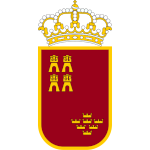Murcia Day in Spain Date in the current year: June 9, 2026
 The Spanish autonomous community of Murcia (officially named the Region of Murcia – Región de Murcia) celebrates its official holiday, Murcia Day, on June 9. On this day in 1982, the Statue of Autonomy of the Region of Murcia was adopted.
The Spanish autonomous community of Murcia (officially named the Region of Murcia – Región de Murcia) celebrates its official holiday, Murcia Day, on June 9. On this day in 1982, the Statue of Autonomy of the Region of Murcia was adopted.Murcia is located in the southeast of the Iberian Peninsula and bordered by the autonomous communities of Andalusia, Castilla—La Mancha, and Valencia. Murcia is one of the few autonomous communities of Spain that consist of a single province; it used to include two provinces, Albacete and Murcia, but Albacete was transferred to Castilla—La Mancha following the adoption of the 1978 Constitution of Spain.
During the ancient time, the territory of Murcia was inhabited by Carthaginians, who founded the town of Cartagena. During the subsequent centuries, it was controlled by the Roman Empire, Germanic tribes, and the Byzantine Empire.
Following the Muslim conquest of the Iberian Peninsula, Murcia became part of the Caliphate of Córdoba. The Caliphate disintegrated in 1031, and the city of Murcia with its surrounding lands became an independent taifa (Muslim principality). At some point, the taifa of Murcia encompassed the territories of the present-day provinces of Albacete (Castilla—La Manch) and Almeria (Andalusia).
During the Reconquista, Murcia became a protectorate of the Kingdom of Castile, although some of its towns did not recognize the treaty between the ruler of Murcia and the King of Castile. In 1264, the Muslim population of Murcia revolted against the Crown of Castile. As a result, Alfonso X of Castile annexed Murcia with military support of his uncle James I of Aragon. After the annexation, the taifa of Murcia became the Kingdom of Murcia.
James II of Aragon, the grandson of James I, broke an agreement regarding the division of Murcia between Castile and Aragon and conquered Alicante, Cartagena, Elche, Lorca, Murcia, and Orihuela. In 1304, the kings of Castile and Aragon signed the Treaty of Torrellas, and most of the conquered territory was returned to Castile. As a result of James II’s conquest, Murcia lost the territory of what is now the province of Alicante.
In the early 16th century, some Murcian towns participated in the Revolt of the Comuneros, which was eventually quelled. About a hundred years later, King Philip III of Spain expelled the Moriscos (Christian descendants of the Spanish Moors) from Murcia and other regions of the country.
In 1833, the Kingdom of Murcia was transformed into the Region of Murcia, which consisted of two provinces, Murcia and Albacete. After the fall of Francisco Franco’s regime and the adoption of the 1978 Constitution of Spain, the province of Albacete was transferred to Castilla—La Mancha, and Murcia was transformed into an autonomous community consisting of a single province.
The Statute of Autonomy of the Region of Murcia was adopted on June 9, 1982. The anniversary of its adoption is celebrated as the official holiday of Murcia. Interestingly, it coincides with La Rioja Day because both autonomous communities adopted their respective Statutes of Autonomy on the same day.
- Category
- Anniversaries and Memorial Days
- Country
- Spain
- Tags
- Murcia Day in Spain, holidays in Spain, observances in Spain, holidays in Murcia, autonomous community days in Spain